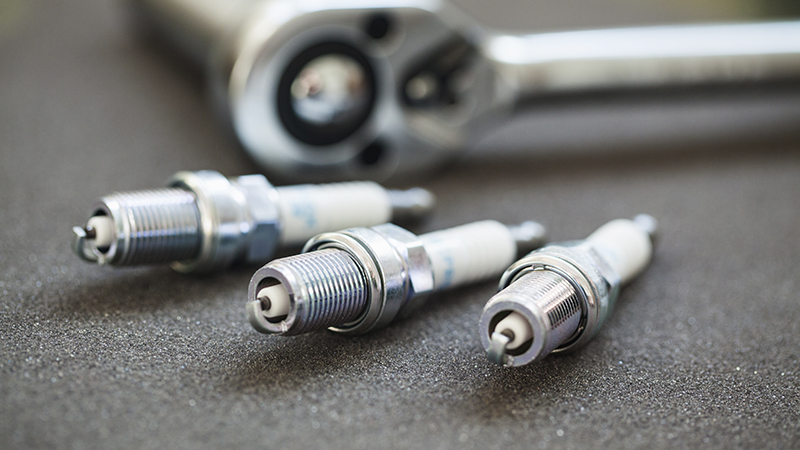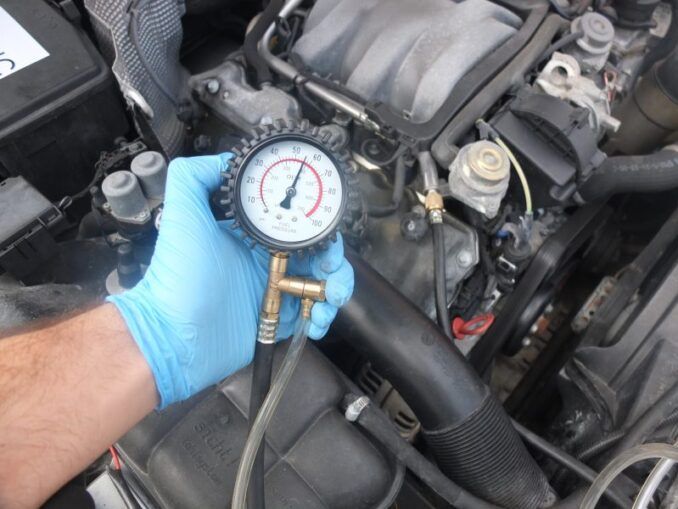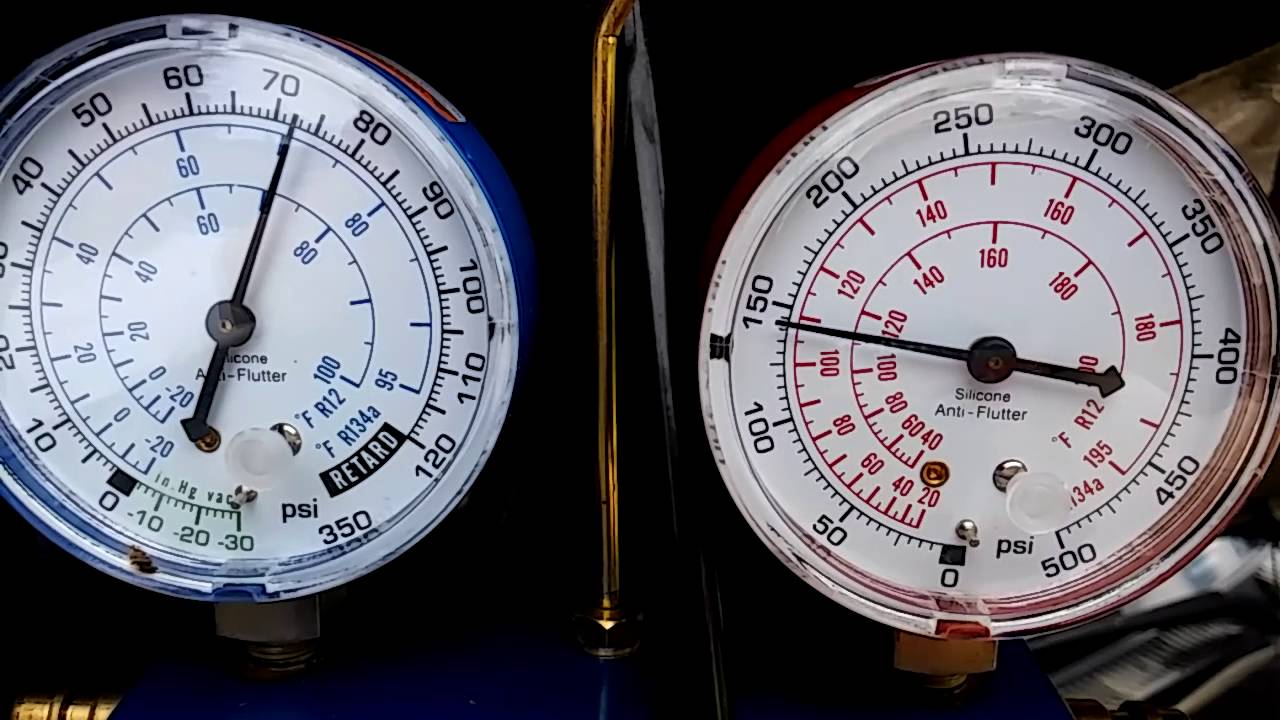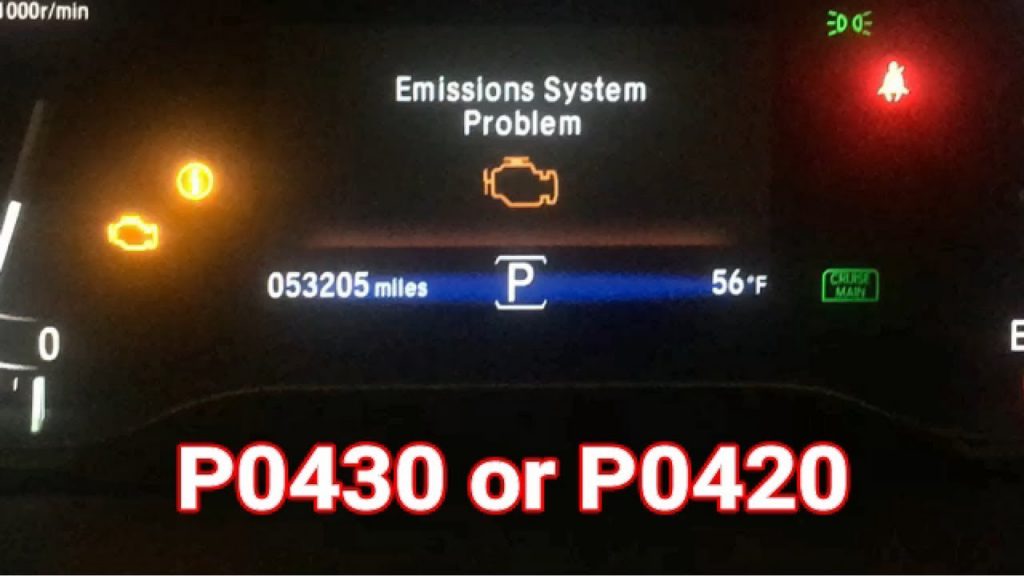How To Read Spark Plugs To Determine Engine Conditions
Despite being a tiny component, spark plugs are vital to your engine’s performance. Without it, there would be no combustion to generate power to run your car. Your spark plug condition not only can tell you if it’s time for replacement but can speak volumes about the engine as well. Knowing how to read spark plugs can help you identify potential engine-related malfunctions early on and save you expensive repairs.
Each different spark plug color is a clear indication of a specific engine-related problem. The rule of thumb is light brown or tan-colored deposits on the tip of your spark plugs are normal, but deposits of different colors and consistencies can be indications of bigger problems. Good spark plugs will burn fuel efficiently, while bad or failing spark plugs can cause the motor not to start at all.
Read on to learn how to read spark plugs to determine their conditions and what you can do to fix the problems, as well as handy pro maintenance tips to always keep your precious vehicle in tip-top shape, including how often spark plugs need to be replaced, symptoms of failing spark plugs and spark plugs replacement cost.
What Do Spark Plugs Do?
Most people don’t look twice at their spark plugs, some might not even know of their function, yet these small parts play an incredibly important role in how your car functions. In fact, without properly working spark plugs, your car more than likely wouldn’t be able to run at all.
Your engine produces power to run your car by creating combustion, or explosion, inside the combustion chamber, hence the name “internal combustion engine”. To generate such combustion, your spark plugs supply the electrical spark that ignites the air and fuel mixture that is fed into the combustion chamber.
These small but simple plugs create an arc of electricity across two leads which are not touching, but close enough together that electricity can jump the gap between them. Electricity is created by the alternator and transmitted through the spark plug, jumping the gap in the plug’s firing end if the voltage supplied to the plug is high enough.

Read more:
How Often Should You Change Spark Plugs?
Like most other components of your engine, spark plugs wear down over time. Spark plugs require routine service and maintenance to keep your engine in optimal operation.
Generally, your spark plugs are made from extremely durable material and are capable of withstanding millions and millions of explosions before wearing out or needing to be replaced. However, like everything else, it’s still true that over time, the explosions and corrosion lead to smaller or weaker sparks.
The primary type of wear here is with the electrode. If you look at a spark plug, you’ll notice one end is narrow and tapered: this is where the wire connects to it. The other end is bulbous, with a small metal rod coming out of the center, and a metal hook to one side. That center rod is the electrode, where electricity arcs from that to the hook.
Through normal use, the electrode on each spark plug does wear down. Eventually, it becomes so worn that the gap between the two leads begins to widen. As a result, it doesn’t create as much or any electric arc, which has a direct and immediate effect on your engine operation, including a higher possibility of misfiring. If your plug corrodes to the point where it breaks, it could do serious damage to the interior of your engine cylinder, which leads to an extremely expensive repair to get it fixed.
In addition, you should also replace the spark plug wires when you get new spark plugs. It’s still a good idea to regularly inspect the wires for any frays, cracks, and even bites since some wires are made from a soy-based material that’s a favorite snack for rodents.
Each vehicle requires a particular type of spark plug made from specific materials and with a designated spark plug gap that is set by a mechanic during installation. Some newer cars, trucks, and SUVs have advanced ignition systems that almost make spark plug replacement unnecessary. However, regardless of any warranties or claims made by a vehicle manufacturer, there are still situations where a spark plug wears out or shows signs of failing.
How to know when a spark plug wears out or fails? Read on to learn how to read spark plugs with a simple visual inspection.
If you check your owner’s manual, you’ll probably find that your automaker typically recommends you replace your spark plugs roughly every 30,000 to 50,000 miles. However, the actual timing of replacement will vary depending on some other factors.
High-performance spark plugs
If you have high-performance spark plugs, it’s more likely that you will need to replace them more often, as the electrode can wear down faster.
Extended-life spark plugs
Many models these days come with installed “extended-life” spark plugs at the factory. Their electrodes do not wear down as quickly, meaning that you won’t need to replace them as frequently. They’re only a little more expensive than a standard plug, yet they are usually rated for a lifespan of around 100,000 miles.
High revs
High revving causes more wear on the engine components than lower revs. If you regularly put your car in high revs, you’ll put additional wear and tear on your spark plugs, thus you’ll need to replace them more often.
Drivers with lighter feet will enjoy a longer life from their plugs and a healthier engine in general. This is because the engine is designed not to travel a particular distance but for a certain number of cycles of combustion. Running at high revs effectively means the combustion cycles will take place faster, thus shortening your engine’s lifespan.
Watch the video to learn how to change spark plugs:
How To Read Spark Plugs: What Different Colours Mean
For optimum engine performance, your engine’s spark plugs should be clean with no damage to the electrodes. If your spark plugs become dirty or fouled, it can affect how your engine runs.
A fouled or bad spark plug is a plug that has become covered with a substance like oil, fuel, or carbon or one that is blistered from running too hot. Below are how to read spark plug colors and conditions from a simple visual inspection to make sure you can detect engine-related problems early.
Normal spark plug
A normal spark plug will have brown or grayish-tan deposits on the side electrode.
Carbon fouled
A carbon-fouled plug will have black, dry soot on the electrodes and insulator tip. This can be caused by a dirty air filter, excessive driving at low speeds, too rich of a fuel/air mixture, or idling your vehicle for too long.
To minimize the possibility of carbon foul, you may want to consider switching to a “hotter” spark plug, one with a higher spark plug number. Otherwise, your mechanic can offer you advice on what type of spark plug to buy to replace the damaged plug.
Burned
Blisters on the insulator tip, melted electrodes, or white deposits are signs of a burned spark plug that is running too hot. The spark plug must be replaced in this case.
Causes can include the engine overheating, incorrect spark plug heat range, a loose spark plug, incorrect ignition timing, or too lean of an air/fuel mixture.
What you can do is check for problems in your engine’s cooling, a lean fuel mixture, or incorrect ignition timing. A melted electrode on your spark plugs means that they’ve been running too hot for too long and could burn a hole through the top of a piston.

Oil deposits
An oil-fouled plug would develop black, oily deposits on the electrodes and insulator tip. The reason would be oil leaking into the cylinders, likely via worn valve guides, guide seals or piston rings, or a cracked piston.
Finding the source of the leak is very important. Once the problem is addressed, you can replace the spark plug.
What you must do in this case is to check for oil consumption problems including leaky valve cover gaskets, crankshaft end seals, and oil pan gaskets. Tightening your automobile’s valve cover or pan bolts may prove a temporary fix, but you’ll likely need to replace the gasket.
Wet
A wet spark plug can be the result of the engine flooding or a bad ignition cable. Flooding happens when you try to start the engine several times without it firing up.
Dirt or moisture on the outside of the spark plug that provides a conductive path to the ground, or an internal crack in the spark plug’s ceramic insulator that shorts the plug to the ground also can be the culprit. You can clean the spark plugs or you can just wait for them to dry out.
Worn electrodes
Worn and eroded electrodes are symptoms of a spark plug that is past its prime. The plug simply has been in the engine too long and needs to be replaced.
Broken electrodes
If the electrodes are broken off or flattened, it is likely that the wrong spark plugs are installed. Check your owner’s manual to ensure that you have the correct spark plug for your specific car.
If a spark plug is too long, it can protrude into the combustion chamber and hit the piston or a valve. This could not only shatter your spark plug into the piston, but shatter the piston itself or damage the head.
A spark plug that is too short will cause your engine to buck. The spark won’t ignite your fuel correctly and can cause poor gas mileage, plus prompt your check engine lights.
Split or chipped insulator
A split or chipped spark plug insulator is a sign of pre-detonation, which means combustion takes place inside the cylinder before the spark plug fires. Check for engine overheating or ignition timing problems, a faulty Exhaust Gas Recirculation valve, or excessive compression caused by a clogged combustion chamber.
Read more:
Symptoms of Failing Spark Plugs
You’ve learned how to read spark plugs, however, you should also learn the symptoms of failing spark plugs so that no potential problem should go undetected and prolonged.
Below are a few common symptoms of worn-out spark plugs or spark plugs that have fouled and need to be replaced by a certified mechanic as soon as possible, so you can continue driving your vehicle without issue. Continuing to drive with worn-out or damaged spark plugs can ultimately cause engine damage, so don’t put it off.
Poor fuel economy
When a spark plug works correctly, it helps burn fuel efficiently in the combustion cycle. It will use the optimal amount of fuel to generate combustion to create power to run your car. With a functional spark plug and given that everything else works efficiently in harmony, your car can achieve better than average fuel economy.
If you notice a reduction in fuel economy coupled with one or more problems below, it most likely can be attributed to a worn-out spark plug. When the plug is not functioning optimally, it is frequently due to the fact that the gap between the spark plug electrodes is either too close or too far apart.
As for the remedy, many mechanics will take out spark plugs, examine them, and adjust the gap to factory settings as opposed to replacing the spark plug entirely.
Read more:
Difficulty starting
If you have trouble starting your vehicle, it could be a sign your spark plugs are worn. The spark plug’s job is to ignite the air and fuel mixture to generate the combustion, thus a failing or worn spark plug will not be able to ignite properly to create power to start your engine.
Engine idles roughly
If you notice that the engine is making a rattling, pinging, or knock-like noise, your spark plugs or spark plug wires might be to blame.
Spark plugs use the electrical current received from ignition coils to ignite the air and fuel mixture within the combustion chamber. A plug that is damaged or installed incorrectly can result in fuel being burned at an inconsistent rate, thus resulting in rough idling.
Slow acceleration
The most common cause of poor acceleration on most vehicles is a problem with the ignition system. Today’s modern engines have multiple sensors that tell the onboard computer and ignition system when to send electric pulses to fire the spark plug, so the issue may be with a faulty sensor. However, sometimes the issue is just as simple as a worn-out spark plug.
A spark plug is composed of materials that work together in order to produce a spark hot enough to ignite the air-fuel mixture. When those materials wear out or the plug becomes dirty, it doesn’t spark effectively which can cause your car to perform sluggishly.
If you notice that your car is running sluggishly or does not accelerate as quickly as normal, it may be attributed to a worn or dirty spark plug that needs to be replaced. However, slow acceleration can also be caused by multiple other factors including bad fuel filters, dirty or clogged fuel injectors, or issues with oxygen sensors. In case the cause is not straightforward, it is best to have a mechanic inspect it.
Engine misfiring

An engine misfire can be noticed by intermittent stumbling or sputtering sounds from the engine. If the engine misfires, it’s typically due to an issue in the ignition system.
Most of the time, in modern cars it’s due to a sensor malfunction. However, it may also be caused by a spark plug wire or the tip of the spark plug that connects to the wire being damaged.
If the engine is allowed to keep misfiring, exhaust emissions will increase, engine power will decrease, and fuel economy will drop. In fact, if the combustion process is interrupted, even for a brief moment, it can cause the performance of your engine to suffer.
If you notice your engine misfires, it’s recommended to have a professional inspection right away. Usually, the vehicle can continue running with a misfire in one cylinder, since the others will keep the car in motion. It won’t, however, run normally and it could become worse over time.
Ignoring the problem for too long can damage the engine parts such as the catalytic converter and oxygen sensor. Also, think of the safety concern when the car loses power and stops in the middle of a busy road.
Read more
Regardless of what the issue might be, the reality is that spark plugs will eventually wear out. Being proactive about spark plug maintenance can extend the life of your engine by hundreds of thousands of miles.
Spark Plugs Replacement Cost
Cheaper spark plugs typically cost less than 10 dollars per piece, while premium plugs with precious metals may cost as much as $20 to $25 apiece. The cost depends on the expected life and material used on the electrode.
You may need to replace several at once, but it still won’t cost very much. You can pay between $16 and $100 for a set of spark plugs, depending on the type of plugs you need and the number of cylinders your engine has. Do remember that some specialty engines use two spark plugs per cylinder. In addition, the labor cost for spark plug replacement would be around $40-$150.














